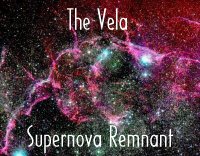|
|
|
 |
| |
| S
t a r ' s L i f e C y c l e
@ |
| |
Before
I start to explain all stars' life cycles, I have to give credit to
Fred Hoyle. From his ideas and theories, I get my explanation of the
cycles.
As space expands there are many more
gaps forming and they need to be filled by stars and energy. So stars
need to have a dynamic life cycle. Moments of birth and death, right?
Stars form
when hydrogen atoms in space are pulled together in bigger and bigger
spheres. As the atoms are crushed together they start to fuse and
form helium (the next heaviest element). That process of atomic fusion
involves huge amounts of energy! The reactions on the sun are like
atomic bomb going off on Earth. Except the atomic bomb would be like
a balloon popping compared to the entire Earth exploding. The release
of this energy does two things.
A lot of
it provides an outward explosive pressure to counterbalance the inward
pressure of gravity in the emerging star. This allows the star to
remain stable for billions of years. Despite all the reactions going
on the stat doesn't explode nor implode.
Secondly,
the other energy is released as heat or light. Hoyle's theory explained
why stars shine. The hydrogen eventually starts to run out leaving
the p redominate
chemical as helium. With less hydrogen to fuel the fusion reactions
there will be less outward pressure, and the balance will be interrupted.
As the pressure builds up the inward gravitational forces will increase
and become powerful enough to press all the newly created helium atoms
tighter and tighter. They will start to fuse forming the next heaviest
elements. This process will continue. When all the elements up to
iron have been produced by fusion, it would take tremendous heat to
produce the next heaviest elements. redominate
chemical as helium. With less hydrogen to fuel the fusion reactions
there will be less outward pressure, and the balance will be interrupted.
As the pressure builds up the inward gravitational forces will increase
and become powerful enough to press all the newly created helium atoms
tighter and tighter. They will start to fuse forming the next heaviest
elements. This process will continue. When all the elements up to
iron have been produced by fusion, it would take tremendous heat to
produce the next heaviest elements.
Smaller
stars can't provide that heat. They begin to die. All the other lighter
elements are shed into space and it starts to cool down. It leaves
a hot iron core known as a white dwarf, then a brown dwarf, and then
a cold iron core waiting it's fate of being annexed by larger objects
or just remaining static.
Larger
stars, though they can produced elements heavier than iron, have so
much inward gravitational force, they began to crush the iron core
until it implodes. As the star dies in a dramatic explosion (supernova)
a great cloud of hot shining brown dust is thrown into space and astronomer's
have seen it! |
| |
Home
| Contact Me | Discussion
Board @  |
|